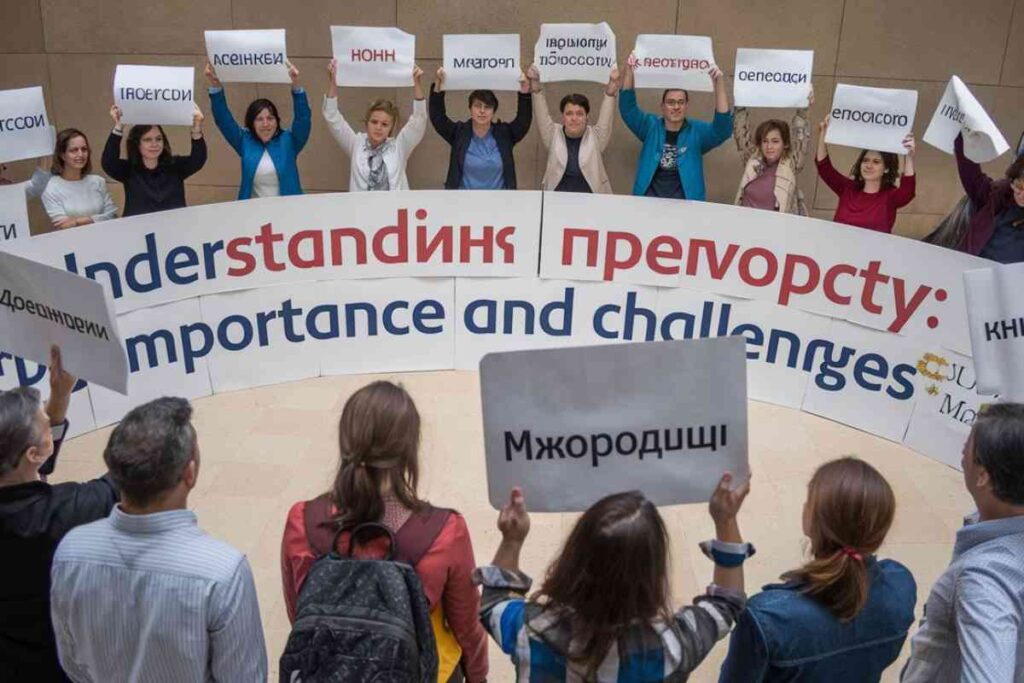- The Importance of Преводсч
- Challenges Faced by Преводсч
- Skills and Qualities of a Successful Преводсч
- Tools and Techniques Used by Преводсч
- Cultural Sensitivity in Translation
- Conclusion
- FAQs
- What does “преводсч” mean?
- Why is translation important?
- What challenges do translators face?
- What skills are needed to be a successful translator?
- How does technology impact translation?
- What is cultural sensitivity in translation?
- Can machine translation replace human translators?
- How can businesses benefit from accurate translation?
Translation, or преводсч, plays a vital role in our globalized world by breaking down language barriers and enabling communication across cultures.
This process not only helps businesses expand internationally but also fosters personal connections and understanding between diverse populations.
In this article, we will explore the significance of преводсч, the challenges translators face, and the skills needed to produce high-quality translations.
The Importance of Преводсч

Bridging Language Barriers
Преводсч is fundamental for bridging language barriers. Whether in business, education, or international relations, translation makes it possible for people from different linguistic backgrounds to communicate effectively.
For example, when a company expands into new markets, accurate translation of its materials and communications is essential for building strong relationships with local customers.
Enhancing Global Communication
In our interconnected world, global communication is more important than ever. Преводсч plays a key role in ensuring that individuals, businesses, and organizations can communicate across borders without misunderstanding.
Whether traveling, studying abroad, or conducting international trade, the ability to translate ideas and messages accurately promotes trust and understanding.
Challenges Faced by Преводсч
While преводсч is essential, translators often encounter a variety of challenges in their work:
Nuances of Language
One major challenge is capturing the nuances of language. Each language has unique expressions and idioms that may not have direct equivalents in another language.
For example, translating a phrase from English to Russian requires not just literal translation but also an understanding of cultural context.
Maintaining Accuracy
Another critical challenge is maintaining accuracy in translation. Translators must ensure that the translated text reflects the exact meaning of the original text.
Even small misinterpretations can lead to significant misunderstandings, making precision and attention to detail essential in the translation process.
Skills and Qualities of a Successful Преводсч

Linguistic Proficiency
To succeed in преводсч, a translator must possess strong linguistic skills. This includes fluency in both the source and target languages.
Additionally, a good translator should be familiar with the cultural references and social nuances of both languages.
Research Skills
Translators often work with specialized content, such as medical or legal documents, which require precise terminology.
Research skills are essential for finding the correct terms and maintaining the accuracy of the translation, especially when dealing with technical jargon or new concepts.
Attention to Detail
Attention to detail is crucial for any translator. Translators must review their work carefully to ensure consistency and catch any errors.
Even minor mistakes can alter the meaning of a message, so a meticulous approach is necessary to produce a high-quality translation.
Tools and Techniques Used by Преводсч
Translation Software
In the modern age, various tools and techniques aid translators in their work. Translation software, such as CAT (Computer-Assisted Translation) tools, helps streamline the translation process.
These tools offer features like glossaries, translation memory, and terminology databases, making the translator’s job more efficient.
Collaboration and Feedback
Collaboration is another important aspect of преводсч. Translators often work in teams, where they can share insights, ask for feedback, and improve their work.
Constructive feedback helps identify areas that need improvement and leads to better quality translations.
Cultural Sensitivity in Translation

Understanding Cultural Context
Cultural sensitivity is an essential skill for translators. Understanding the cultural context of the source material is key to ensuring that the translation is appropriate for the target audience.
Cultural differences, such as varying meanings of colors, symbols, and customs, can significantly affect how a message is received.
A culturally sensitive translator will be able to adjust the text to ensure it resonates with the audience while avoiding misunderstandings.
Conclusion
Преводсч is an essential tool for effective communication across cultures. Despite the challenges translators face such as language nuances, accuracy, and cultural differences the value of accurate, culturally sensitive translation cannot be overstated.
By embracing advanced tools and fostering collaboration, translators can produce high-quality translations that bridge linguistic gaps and promote understanding in an interconnected world.
Whether for business, education, or personal connections, преводсч plays a key role in helping individuals and organizations communicate across borders.
FAQs
What does “преводсч” mean?
Преводсч translates to “translation” in English and refers to the process of converting text from one language to another.
Why is translation important?
Translation is essential for effective communication across cultures, allowing people to share ideas, information, and services.
What challenges do translators face?
Translators often encounter challenges such as language nuances, maintaining accuracy, and cultural differences.
What skills are needed to be a successful translator?
Key skills include linguistic proficiency, research skills, and attention to detail.
How does technology impact translation?
Technology, such as translation software, helps streamline the translation process, improving efficiency and consistency.
What is cultural sensitivity in translation?
Cultural sensitivity involves understanding the cultural context of the text being translated to avoid misunderstandings and ensure accurate messaging.
Can machine translation replace human translators?
While machine translation can assist with basic translations, it cannot fully replace human translators due to the need for understanding context and nuances.
How can businesses benefit from accurate translation?
Accurate translation helps businesses effectively communicate with clients and partners in different countries, fostering trust and building stronger relationships.




